The Fall 2020 Preview Guide
Higurashi: When They Cry - NEW
How would you rate episode 1 of
Higurashi: When They Cry – GOU ?
Community score: 3.9
What is this?
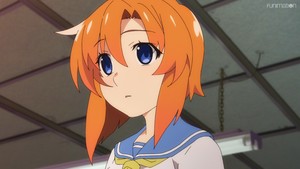
Keiichi Maebara has transferred from the city to the village of Hinamizawa that lies deep in the wilderness. The village was spared from a plan to build a dam that would have sunk it under a lake, and it is now surrounded by nature and following its ancient customs. Keiichi makes new friends there and lives an ordinary life. But once a year, Hinamizawa village celebrates its festival, Watanagashi, and with it Keiichi's calm days are over, and a chain of unending tragedy begins.
Higurashi: When They Cry - NEW is based on a sound novel and streams on Funimation and Hulu at 11:30 AM ET on Thursdays.
How was the first episode?
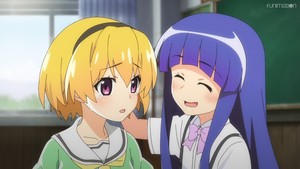 Rebecca Silverman
Rebecca Silverman
Rating:
There are few things riskier in entertainment than remaking a popular title, especially if the first iteration was pretty good to begin with. That made me very leery going into the new Higurashi: When They Cry anime, because not only do I really, really enjoy the manga version, but I also am a fan of the 2006-7 anime adaptation. Therefore I'm pleased to say that the first episode of the new adaptation of Ryukishi07's original sound novels looks to be off to a promising start, and despite the new, softer character designs that make Mion look much more proportionate, everything is also very recognizable.
As franchise fans already know, the first episode/chapter of the story isn't necessarily a great one upon which to judge the entire plot, because Higurashi: When They Cry is more of a puzzle in story form than a linear narrative in the traditional sense. That said, it's clear that most of this episode is trying to lull us into a false sense of security – despite an opening scene of a boy beating a girl to death with a bloody bat, most of the episode features a cast of happy kids playing games as part of their club activities at the local one-room school. (Or at least, one room currently; the building speaks of days when tiny rural Hinamizawa was a more populous town.) There are things that hint back to that initial moment of darkness, though – beyond the very creepy ending shot, we also have an excellent vocal shift from Mai Nakahara as Rena when Keiichi brings up the question of whether or not there was ever a murder and dismemberment in the seemingly idyllic town. In addition, there are some major clues to later arcs sprinkled throughout this episode, such as when Keiichi is playing the scavenger hunt at school; also keep an eye on Rika, especially when none of the other characters are looking at her.
But most of that is largely in the background at this point. Photographer Tomitake showing up and mentioning that “they never found one of his arms” is really the bluntest the episode gets, with the rest of the episode focusing on Keiichi's relationships with Rena, Mion, Rika, and Satoko. We can guess from context clues – his mother's words and his own mention of having “gone back” for a funeral, among others – that he hasn't lived in Hinamizawa for very long, and he's therefore just getting the hang of how things work in the village. He's almost indulgent of Rena's peculiarities, appearing to see Mion as more of his equal, and that he's suddenly getting odd responses and reactions from them after he asks about Tomitake's words is clearly something that's beginning to put him on his guard, especially after he finds the old magazines carefully stacked at the dump right near where he and Rena were trying to liberate a “Kenta” (as in “Kentucky” Fried Chicken) statue from under the rubble.
The clear shots of calendars telling us that the story begins on June 10, 1983, just over a week from the local festival, let us know that things are working on a timer. Just what they're counting down to – the festival? The murder we saw in the beginning? – is what makes this series worth watching.
 Theron Martin
Theron Martin
Rating:
During the moe craze that ran from the mid-2000s up through the early 2010s, one of the most curious sub-trends was what I sometimes call “murder moe,” where moe girls would go insane and brutally murder people in bloody, sometimes torturous fashion. Although 2004's Elfen Lied arguably started that sub-trend, no title embodied it more fully than the 2006 title released in the States as When They Cry – Higurashi. It was an adaptation of a series of doujin sound novels and electrified audiences at the time with its sudden shifts between sweet innocence and bloody mayhem, some strong mystery elements, and a cyclical storytelling style that would probably now be compared to Re:Zero. This remake will introduce that insanity to a whole new generation of anime fans.
That being said, I have very mixed feelings about this remake after the first episode. At least 80% of it is a scene-for-scene (and in some places even shot-for-shot) reproduction of the original's first episode, including an eye-popping opening scene of graphic violence which stands in stark contrast to the rest of the episode. The main differences are that this version emphasizes Satoko's prankster nature more and a card game which plays out in the first episode is instead referred to here and replaced by a scavenger hunt. A couple of small details may also be skewed more towards the ultimate plotline and one additional shot of Rika, with glowing red eyes, has been added at the end, giving a much earlier impression that she is not normal even by the standards of Hinamizawa. Essentially, though, it is the same episode. So why redo it now, and with so little content and stylistic changes? 14 years is not that long.
The other big question is whether this fits the time it is being released. The heavy cutesy elements and character design styles were perfect for a title released near the height of the moe era, but now they feel more like a throwback. Keiichi's standard casual-wear outfit is at least an improvement, but I am less than crazy about the adjusted character designs, even if they are closer to the source material. Significantly, the background sound of the cicadas – which was taken to almost oppressive levels in the original – has been dialed way down.
Evaluated solely as a standalone, the truth Keiichi learns about a man being killed and dismembered, and how the girls sharply deny anything happened in what seem to be different personalities, opens up a compelling mystery that unsettles the pleasantness which came before. It is a potent hook, as it calls into question how bucolic this village might be and whether anything we have seen so far can be taken at face value. Newcomers have a very twisty story to look forward to here.
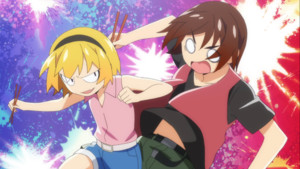 Nicholas Dupree
Nicholas Dupree
Rating:
Looking back, it's weird I never actually got into the original Higurashi. While the series wasn't exactly new by the time I got into anime, its iconic character designs and infamous dark twists were still heavily referenced in fandom circles, and I'm certainly a fan of horror – anime or otherwise. But for whatever reason I just never got around to checking it out, and now over a decade later I feel a bit at odds about how to approach it. This is at once a series with its long-established reputation to thank for this remake even existing, yet it's a property defined by the shock of its horror swerve to the point it inspired an entire subgenre of bait-and-switch, Cutesy-to-Horror anime and visual novels. Could Higurashi still work in a world with the likes of School-Live and Doki Doki Literature Club now relatively common?
As of the first episode, the jury's still out, but within a vacuum this premiere at least makes a solid case for itself. I have no idea how this new series compares to the original, but despite some skepticism I came away from the episode intrigued about what's to come. A lot of this comes from the show's restraint – outside of a bloody and mysterious opening scene, there's no real scares to speak of, but rather an ever growing unease as Keiichi slowly realizes there are some unsavory secrets in the past of his idyllic new home. It starts off innocuous – an unusually terse line from his friend Rena, a pause in conversation just a little too long, things that are easy to ignore in the moment but culminate to a feeling of the floor slowly shifting under your feet. The concept of a terrible secret at the heart of an idyllic rural community is classic horror setup, but by letting tension build slowly, the writing lets it simmer constantly just beneath the surface. The only big issue is how these moments are scattered among otherwise dull and hollow shenanigans with the main cast. To a point I suppose this is a casualty of Higurashi's own hook – things need to be silly and inconsequential to contrast with the later terrors – but until the hints started piling up I felt my patience waning and started wishing we could get to the bloodworks already. That feeling was gone by the time the credits rolled, so I would suggest anyone bored by the opening half of the premiere just persevere to get to the more engaging moments.
Visually the show is a bit worrisome. The character designs, courtesy of Akio Watanabe of Monogatari fame, are fine enough updates from the very 2000's DEEN originals, though every time Satoko opened her mouth I expected her to eat a donut. The bigger issue is how much those designs stick out from their surroundings – no one ever feels like they're on the same physical plane as the houses or trees around them, and this is especially salient when the kids go diving in the local trash heap. It's not enough to ruin the series, but it can definitely get distracting at points, and could potentially undermine the gorier moments that are sure to come. Still, that I'm even worrying about that possibility is proof that Higurashi has got its hooks in me, and I'll at least be giving it a few more episodes to see what all the cicadas are chirping about.
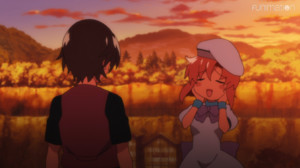 Caitlin Moore
Caitlin Moore
Rating:
Somehow, despite already being pretty deep into anime fandom when it premiered, Higurashi almost completely passed me by. Everything I knew about it came from a silly YouTube edit called, “If 4Kids got Higurashi.” All I knew when I started up the first episode was that it was a horror show, and quite beloved.
For the first half of the episode or so, I clung to that knowledge like a liferaft because those first few minutes were sheer agony. They were everything I hated about mid-00's moe anime, boxed up for my convenience and left on my front porch to rot in the sun. A group of teens getting up to shenanigans somehow without adult supervision! Girls making extravagant box lunches for the useless male lead! Long walks to school featuring meaningless conversations! The first eight minutes felt more like an hour. I was rocketed back in time, when instead of endless iterations of isekai, it was endless iterations of almost this exact set of tropes. Dark times to be an anime fan, dark times indeed.
So when that sense of wrongness started to creep in, it was more like relief than a ramp up in tension. My brain finally had something interesting to hold onto, instead of scrabbling against the insipidness of one of the worst eras for anime yet. Digging through trash for off-brand Colonel Sanders statues is a weird habit, even without a photographer appearing and rambling about the brutal murder that took place years ago. Suddenly, the girls' fawning is cast in a sinister light - did they have something to do with it? (Of course they did, or else the anime wouldn't exist or have the reputation it does.)
Higurashi's reputation precedes it, which is probably a good thing, considering its extremely dated front half. I don't know if modern audiences would have the patience to sit through it otherwise.
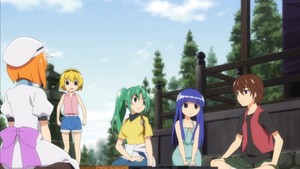 James Beckett
James Beckett
Rating:
It's been about four years since I reviewed the original Higurashi: When They Cry for this very website (R.I.P. Shelf Life), and watching the first episode of Higurashi: When They Cry - NEW gave me such a visceral feeling of déjà vu that I immediately dug up my Blu-rays of the 2007 series to compare notes. The voice cast has returned after over a decade to reprise their roles, after all, and there were certain exchanges and images that I recalled clearly from Higurashi '07. The specifics of the plot are still very fuzzy, but I was struck by how well I remembered scenes like the bloody baseball murder that opens the episode, the extended shrine picnic that Keichi shares with the girls, and all of the time that Keichi and Rena spend rooting around in that absurdly large trash pit for a goofy Colonel Sanders knockoff toy. The episodes even conclude with the same catchy theme song! I was certain that, beyond the visual changes provided by the switch from Studio DEEN to Passione, Higurashi - New's first episode was basically identical to its predecessor's.
It turns out that there were a lot more changes than I expected, mostly consisting of the episode's general pacing, the framing of that opening murder sequence, and the whole bit with eraser and thumbtacks that seems new to me, though don't hold me to that. There were also the many obvious differences between individual shots and bits of dialogue, but none of this dramatically changes or recontextualizes the story. They're simply alternate takes on the same story beats, with characters essentially behaving as they did the first time around.
Then there's the new look that this iteration of Higurashi is sporting. If we're being brutally honest, Studio DEEN's show was more than a little rough around the edges; it was downright hideous at times, and revisiting it today reminded me of how poorly it's aged. Passione's production definitely looks more up to date, and a lot of their stylistic and editing choices are in line with current trends and sensibilities. Gone is early 2000s emphasis on wacky non-sequiturs, and the voice actors don't sound near as over-the-top now, either. Though the colors are brighter, and the character designs are less pointy and janky looking, this is a more subdued version of Higurashi, and, I'd wager, an easier version for modern viewers to take seriously. Don't get me wrong, though — Higurashi still looks kind of cheap in 2020; as much as it might like to be, this ain't exactly a SHAFT joint.
I can't say whether I'm completely sold, yet. For one, the jarring shifts from goofball comedy to bloodcurdling horror are a huge part of Higurashi's appeal, and I don't know if they hit quite as sharply here. There's something uncanny about the inconsistent modeling and rough frame transitions in this new animation, too. Maybe an intentional trick, to add to the creep factor, but it also gives me a vague sense of… not motion-sickness, but a kind of unease? It's difficult to put into words. That could very well be a personal issue, though, and at the end of the day, Higurashi is good. Newbies, especially, should find plenty of mystery and suspense to latch on to, and if nothing else, it will be good to have a whole new generation of fans learn just what happens when the cicadas cry…
discuss this in the forum (199 posts) |
this article has been modified since it was originally posted; see change history
back to The Fall 2020 Preview Guide
Season Preview Guide homepage / archives